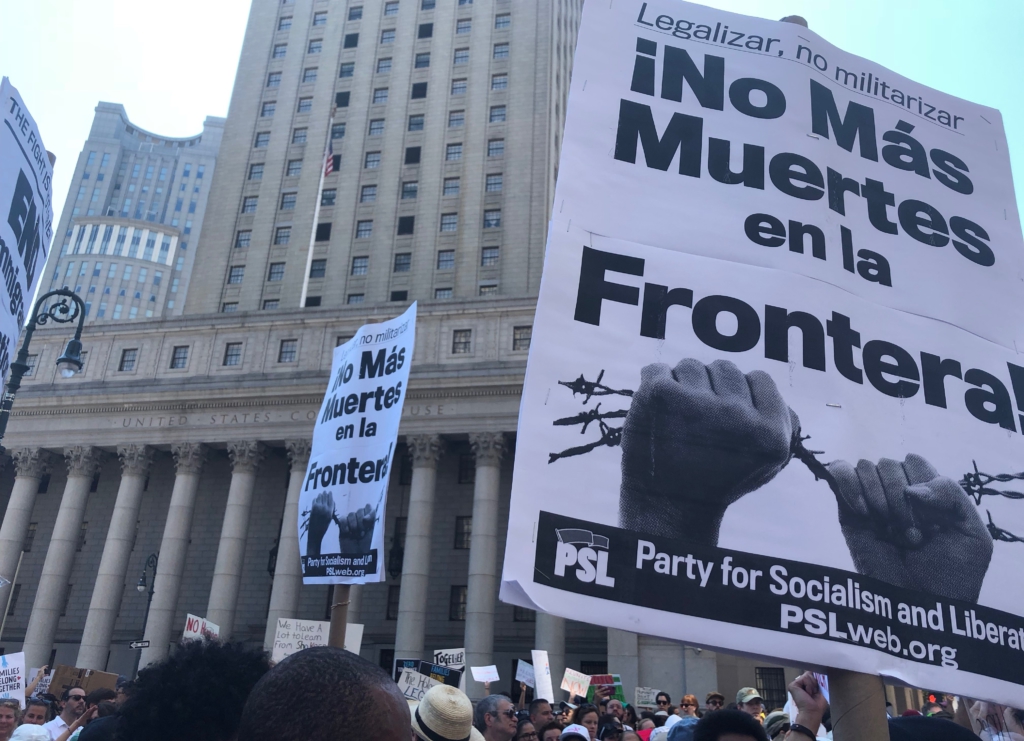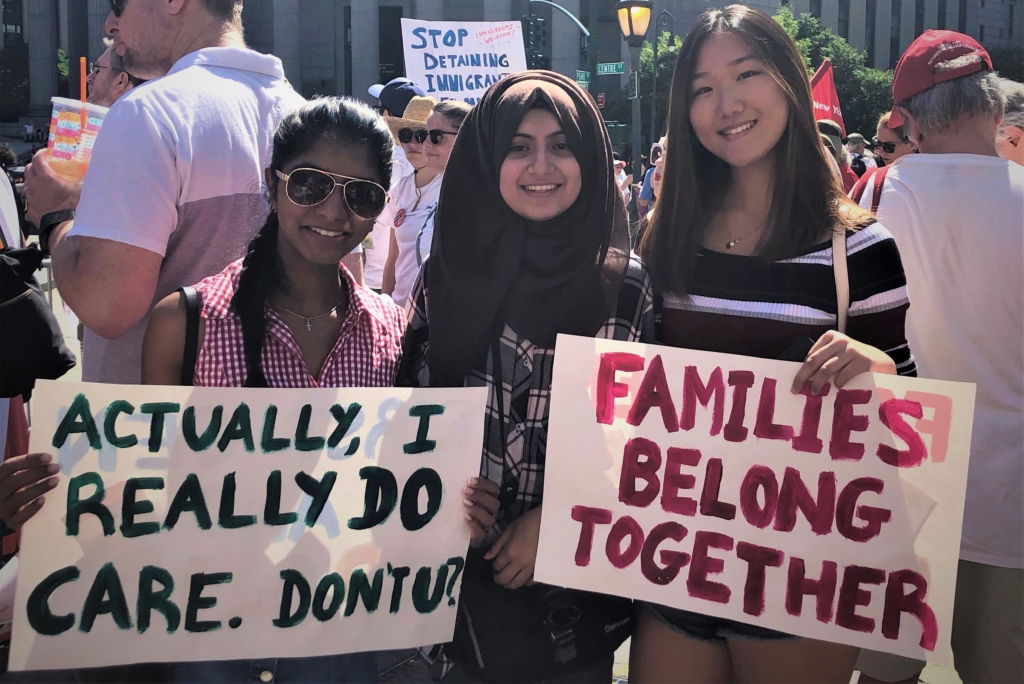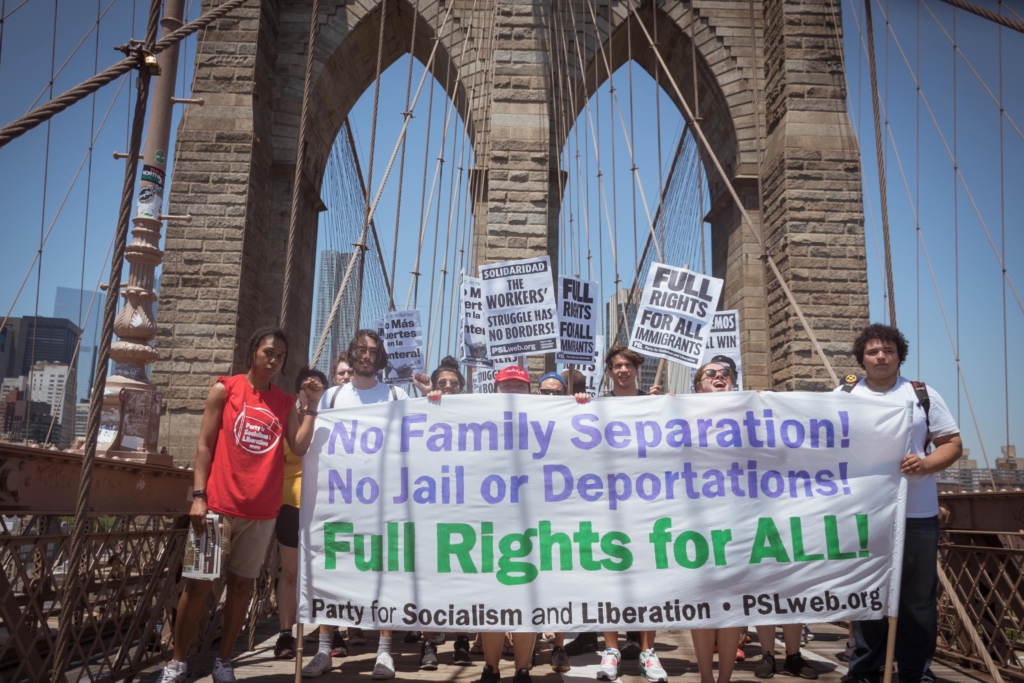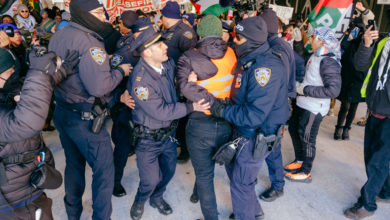
Reflecting the national outrage at the Trump Administration’s separation of immigrant families, some 12,000 people took to the streets of New York City on June 30, joining the more than 750 demonstrations nationwide.
The demonstration followed an eight-day occupation of an ICE processing and holding center at Varick Street in Manhattan. Protesters camped out in front of the facility June 21-29 forced ICE to suspend both transferring detainees to the center and conducting immigration hearing there.
The June 30 protest, organized by the New York Immigration Coalition, gathered at Foley Square, in the shadow of Manhattan’s courts and federal building, and marched across the Brooklyn Bridge.
The thousands who came out braved a hot sun and temperatures in the 90s. They also had to deal with police, who threw up a web of barricades, pinning the demonstrators tightly and uncomfortably together for hours in the heat before the march. This made it hard to seek temporary respite from the sun, and for passersby to join the protest.
Nevertheless, a wide range of people came to show their anger and outrage. There were left organizations, social service and neighborhood groups, immigrant rights and legal groups, and a great many individuals with their own homemade signs and banners, many bringing their children.

Homemade signs included “No human is illegal,” “Families belong together,” “Another Jew against the Muslem ban,” and “There is no such thing as other people’s children.”
Different political currents were there, ranging from some groups and individuals whose solution to the immigration crisis was to vote Democratic, to those seeking a more compassionate way to detain immigrants and little else, to those calling for the abolition of ICE, and an end to detentions and deportations. Some pointed out that devastation wreaked by U.S interventionist policies abroad drives migrants to the U.S.
Some protesters, whose initial response bringing them to the demonstration was emotional, were attracted to and appreciative of the political focus given by signs, banner and chants of the Party for Socialism and Liberation contingent. These included calling for full rights for all immigrants and an end to immigrant detention, mass incarceration, and deportations. A main slogan was “The workers’ struggle has no borders.” Many joined this contingent.
On the slow march over the Brooklyn Bridge, PSL members offered political agitation to the new people. They were encouraged to think about what it means to abolish ICE—truly ending deportations—and not simply renaming the repressive organization with another acronym.






